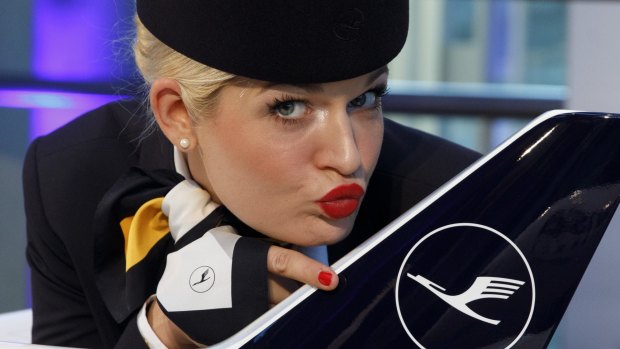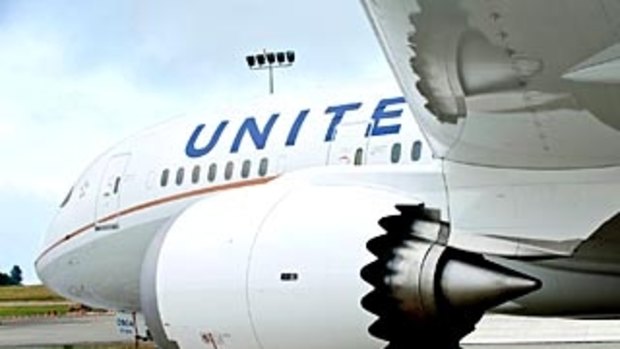This was published 5 years ago
World's biggest airlines 2018: United Airlines overtakes Delta to regain No.2 spot
By Justin Bachman

Lufthansa is now Europe's biggest airline.Credit: Bloomberg
The airline world has a new No. 2 after United Airlines' aggressive domestic expansion pushed the carrier ahead of Delta Air Lines in terms of passenger traffic.
Early last year, United embarked on an effort to regain market share at its three mid-continent hubs in Chicago, Houston and Denver. Under a three-year push, United is targeting capacity increases of as much as 6 per cent annually as it seeks to increase flight connections - and profits - at its busiest airports.
United last year recorded 230.2 billion revenue passenger miles, an industry yardstick of traffic that multiplies the number of passengers by the distance flown, the company said Wednesday in a statement. Delta had 225.2 billion, according to a report last week. Delta took over the No. 2 spot in 2015 as Chicago-based United retrenched.

United Airlines carries the largest amount of passenger traffic.
"Our goal is not to be the biggest. We want to be the best and as we implement our strategy, we are looking to build on this momentum in 2019," United spokeswoman Megan McCarthy said in an email.
American Airlines, which has yet to release its traffic for all of 2018, is expected to retain its title as the world's largest carrier.
United also led major US carriers in stock gains last year, with a 24 per cent jump. The other eight companies on a Standard & Poor's airline index all lost value.
Meanwhile, Lufthansa has overtaken Air France-KLM to become Europe's biggest airline, grabbing the top spot held by the Paris-based company since a merger of the French and Dutch flag-carriers in 2004.
Having closed in on its rival in 2017, the German carrier finally cruised past last year after boosting passenger traffic 9 per cent, almost three times the pace of growth at its rival. Air France-KLM is also being reeled in by British Airways owner IAG SA, which expanded twice as fast in 2018.
The changing hierarchy marks the culmination of mostly organic growth at Lufthansa, aided by the purchase of smaller brands Swiss, Austrian and Brussels and the expansion of discount unit Eurowings, which grew by almost one-quarter last year. Lufthansa also secured a key deal with pilots in 2017 and last year benefited from unexpectedly high demand in first class.
Air France-KLM, by contrast, has suffered years of strife as workers resist overhaul plans, leading to successive management shakeups as its French state shareholder balked at sometimes violent labor unrest. The French arm was also affected by air-traffic control strikes last year, as well as the nationwide Yellow Vests anti-government protests.
Lufthansa is now 0.2 percent bigger than Air France-KLM when measured by traffic or revenue passenger kilometres, the industry benchmark calculated by multiplying the number of passengers carried with the distance flown.
IAG was founded through a merger of BA and Spain's Iberia, a carrier significantly smaller than KLM, and has also absorbed discount specialist Vueling and Aer Lingus of Ireland
Bloomberg
Sign up for the Traveller newsletter
The latest travel news, tips and inspiration delivered to your inbox. Sign up now.